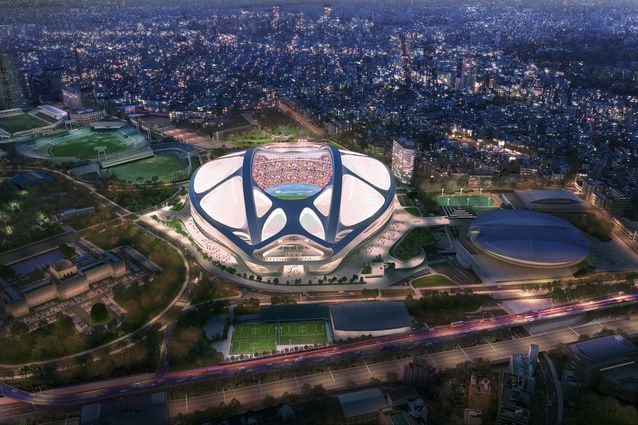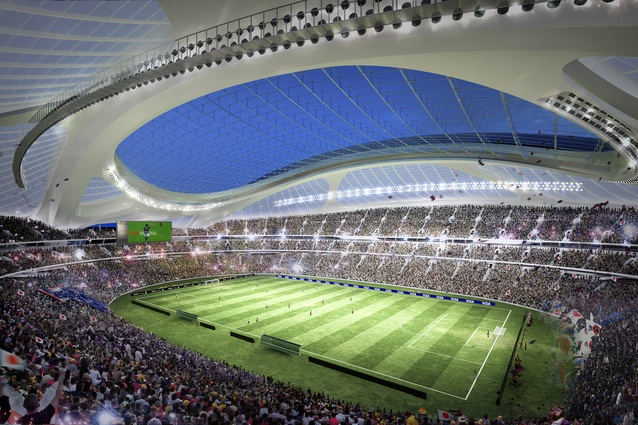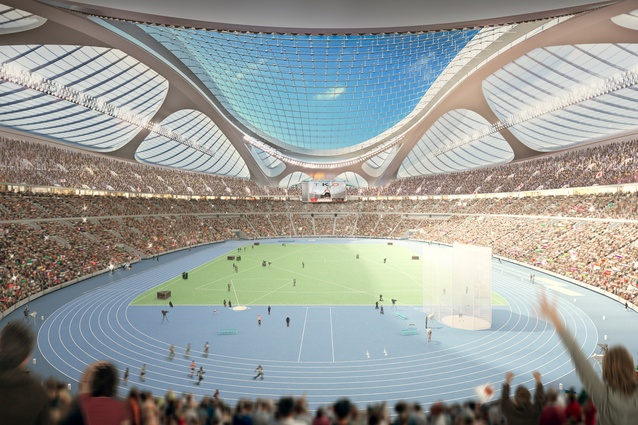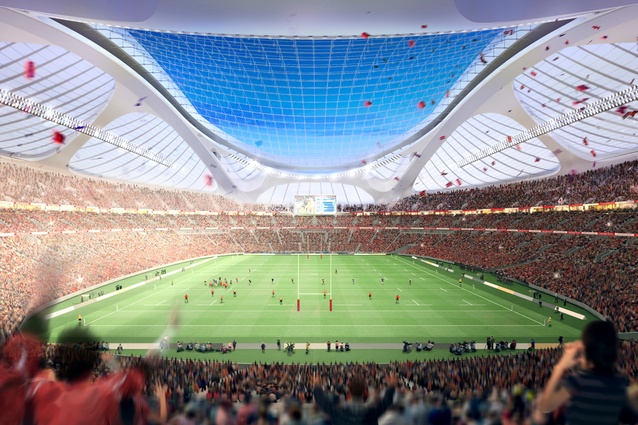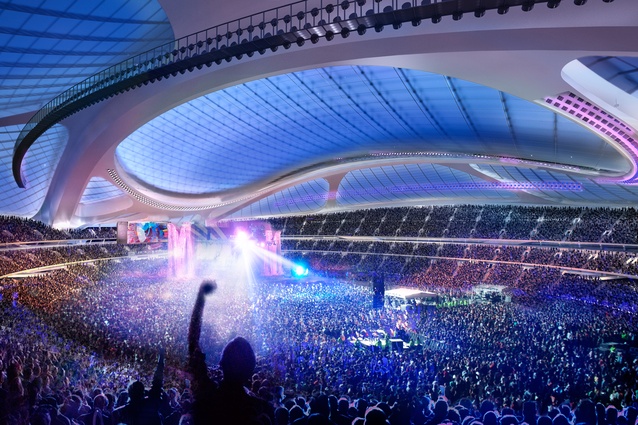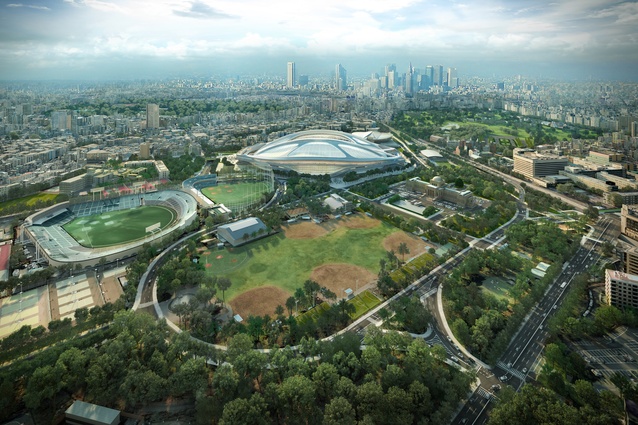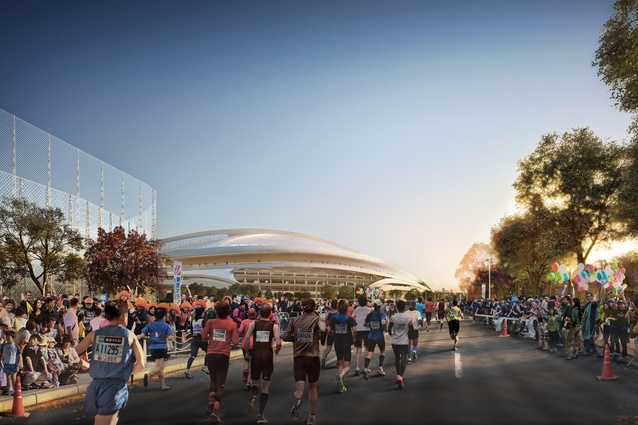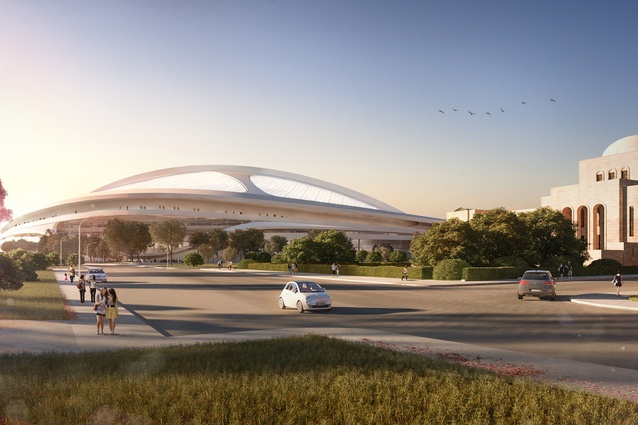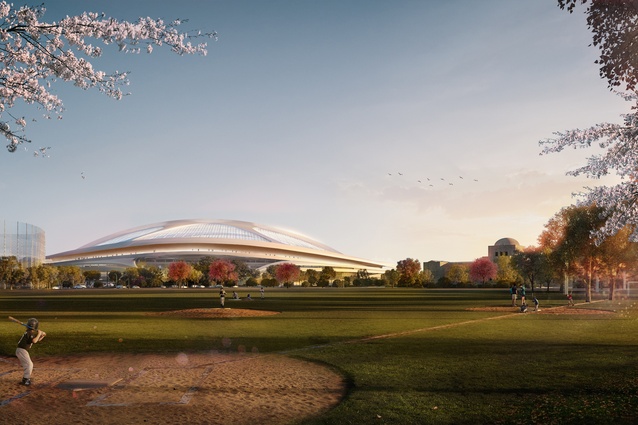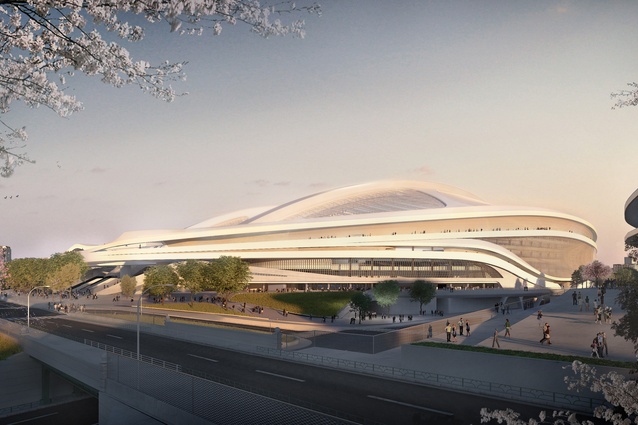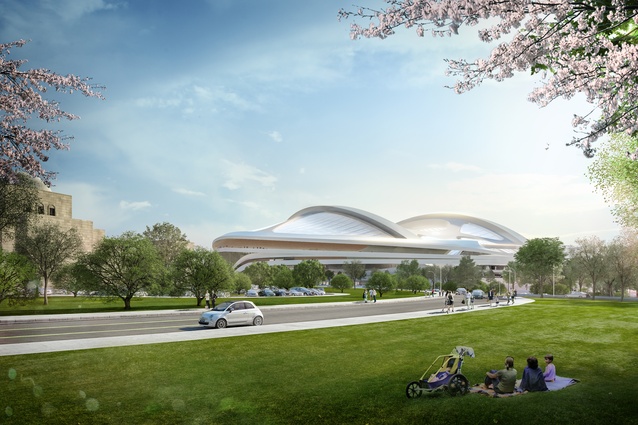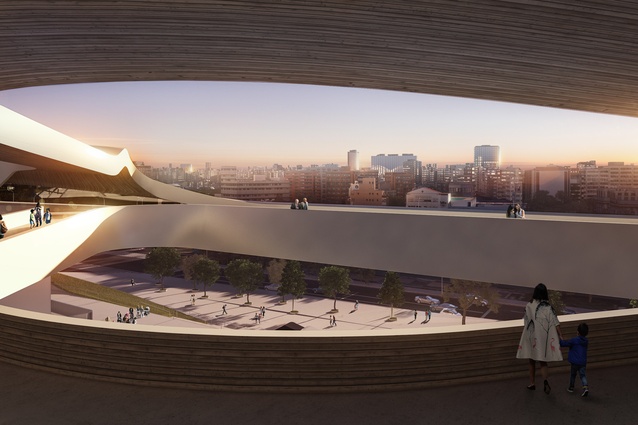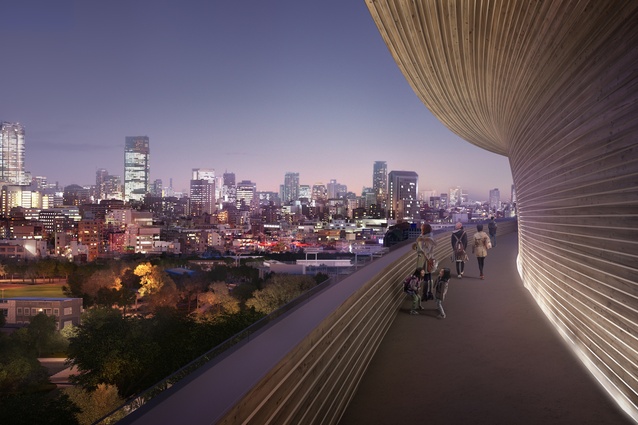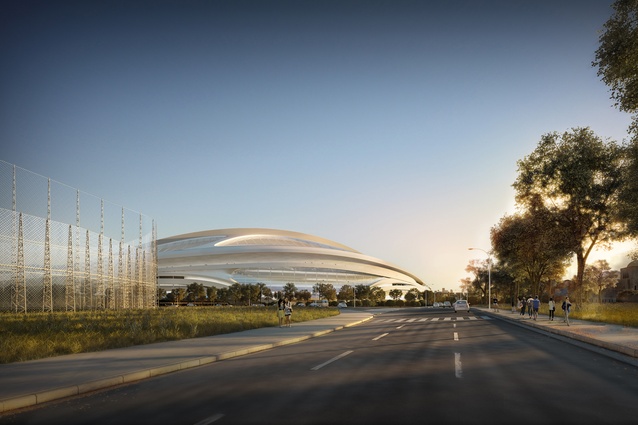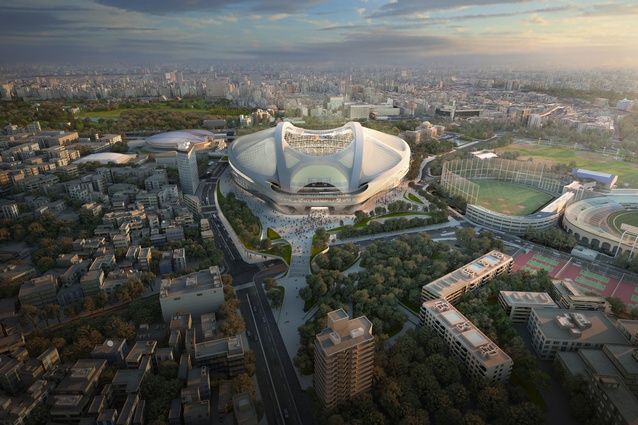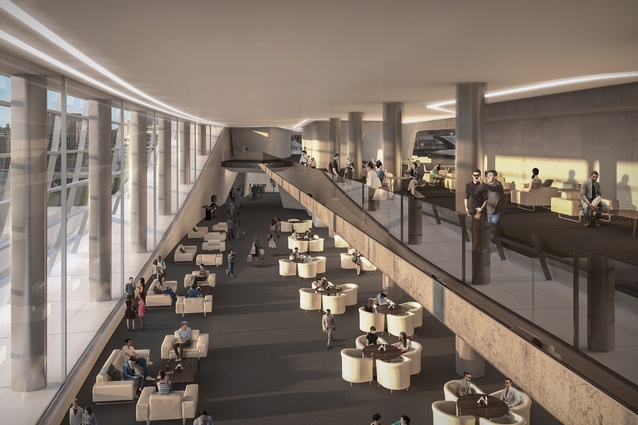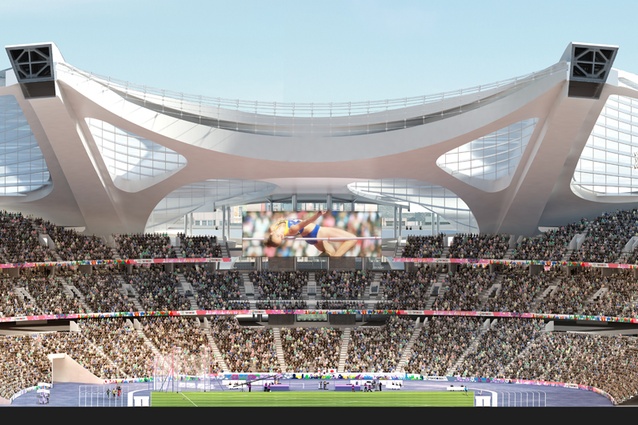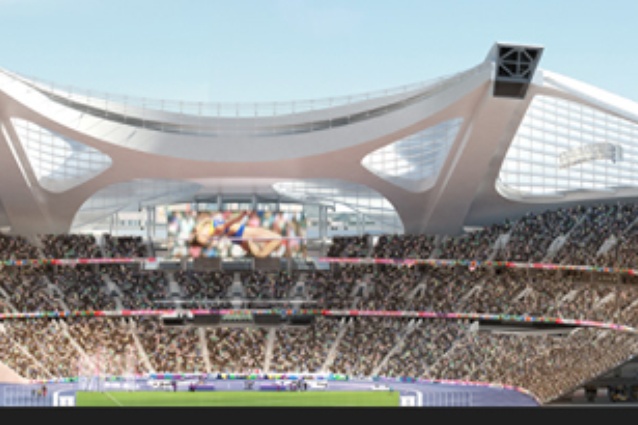Zaha Hadid Architects’ fresh bid to win back Tokyo stadium
Zaha Hadid Architects has launched a new public campaign in an effort to win back the commission to design the Tokyo Olympic stadium, after it was publicly dumped by the Japanese government in July 2015.
The stadium design, which came under fire from eminent Japanese architects, was officially abandoned due to costs escalating from ¥130 billion (AUD$1.5 billion) to ¥252 billion (AUD$2.9 billion). The government announced it would conduct a new competition that combined design and construction to save cost and time.
Debate had raged in Japan over the size of the proposed stadium for the 2020 Tokyo Olympic Games, which prompted the Japanese government to reduce the size in October 2013.
But it did little to silence the critics. Pritzker Prize laureates Fumihiko Maki and Toyo Ito called the proposed stadium a “monstrosity completely out of scale with the surrounding mixed-residential environs.”
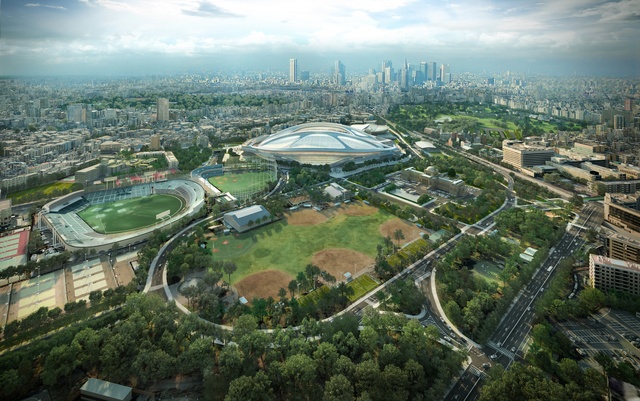
In May 2014, they launched a petition to axe plans for the new stadium all together in favour of refurbishing the existing National Olympic Stadium designed by Mitsuo Katayama and built for the 1964 Olympics. “The area inclusive of the existing National Stadium is a designated nature preserve, where zoning and urban planning regulations carry a 20m height limit,” Ito and Maki said in their petition. “The proposed new mega-stadium, however, would rise to 70 metres, the height of a 20-storey skyscraper.”
Despite receiving more than 80,000 signatures, Ito and Maki were not successful in their bid to retain the existing stadium, which was demolished in May 2015.
Arata Isozaki also added fuel to the fire, releasing an open letter to the Japan Sports Council that described the proposed stadium as “a dull, slow form, like a turtle waiting for Japan to sink so that it can swim away.” He warned that going ahead with the design would be a “monumental mistake” and a “disgrace to future generations.”
The widely unpopular design has been likened to a squashed bicycle helmet, a spaceship and a robot vacuum cleaner, with even less flattering memes depicting it as a child’s potty circling the internet.
The public backlash to the cost blowout had tarnished Japanese Prime Minister Shinzo Abe’s government, whose approval rating, which was consistently high, plummeted to an all time low just days before the government backed away from Zaha Hadid Architects’ design. The sports minister also faced calls to resign from Japan’s main opposition party over the budget blowout for the stadium.
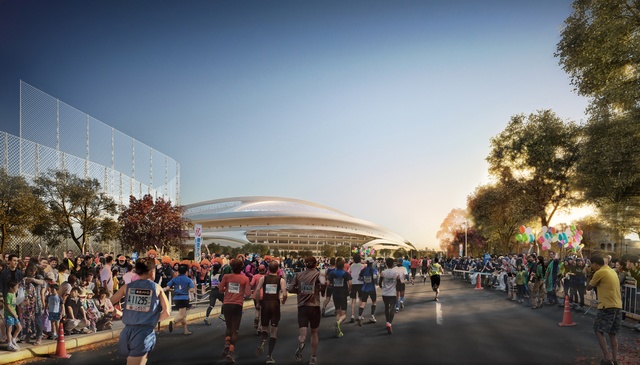
But Zaha Hadid Architects is standing firm by its 2012 competition-winning design, which was an integral part of Japan winning the bid to host the 2020 Olympics. It hit back at its critics with accusations of jealousy, hypocrisy and xenophobia: “They don’t want a foreigner to build in Tokyo for a national stadium,” Hadid told Dezeen. “On the other hand, they all have work abroad. Whether it’s Sejima, Toyo Ito, or Maki or Isozaki or Kengo Kuma.”
Toyo Ito and SAANAA were among the 11 unsuccessful finalists in the 2012 competition, along with Australian practice Cox Rayner which secured second place. “The fact that they lost is their problem, they lost the competition,” said Hadid. “If they are against the idea of doing a stadium on that site, I don’t think they should have entered the competition.”
Against claims that its design caused the budget blowout, Zaha Hadid Architects released a statement arguing the blame should be placed on Japan’s uncompetitive contractors, a claim reiterated in its latest campaign.
A new and lengthy 23-minute video and 90-page report was released by Zaha Hadid Architects “to help the public understanding of the project.”
“The stadium needs to last well beyond the initial investment so it becomes a respected institution of public celebration and congregation for the next 50 to 100 years,” Zaha Hadid Architects argues. “The only way to achieve this ambition is to stick with the current design.”
“To start the design from scratch is an unnecessary risk. We believe the answer is to introduce more competition between the contractors. A new process needs to change the market conditions in Tokyo, not the design. The design is not the determining factor in these circumstances. Rather the design should be seen as the only way to achieve value for money in the market.”
The Japanese government has also announced it would again scale back the size of the stadium from 80,000 seats to 68,000.
Whichever design the Japanese government choses, the new National Stadium will miss its first critical deadline of being host to the 2019 Rugby World Cup. It is now expected to be completed by March 2020.

